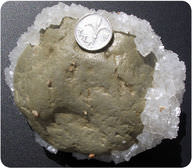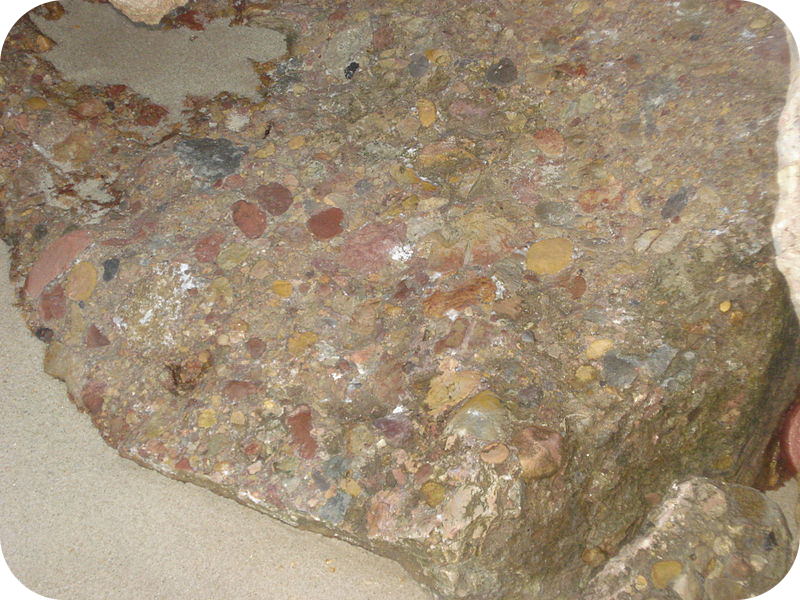4.14: Sedimentary Rock Classification
- Page ID
- 5374
\( \newcommand{\vecs}[1]{\overset { \scriptstyle \rightharpoonup} {\mathbf{#1}} } \)
\( \newcommand{\vecd}[1]{\overset{-\!-\!\rightharpoonup}{\vphantom{a}\smash {#1}}} \)
\( \newcommand{\id}{\mathrm{id}}\) \( \newcommand{\Span}{\mathrm{span}}\)
( \newcommand{\kernel}{\mathrm{null}\,}\) \( \newcommand{\range}{\mathrm{range}\,}\)
\( \newcommand{\RealPart}{\mathrm{Re}}\) \( \newcommand{\ImaginaryPart}{\mathrm{Im}}\)
\( \newcommand{\Argument}{\mathrm{Arg}}\) \( \newcommand{\norm}[1]{\| #1 \|}\)
\( \newcommand{\inner}[2]{\langle #1, #2 \rangle}\)
\( \newcommand{\Span}{\mathrm{span}}\)
\( \newcommand{\id}{\mathrm{id}}\)
\( \newcommand{\Span}{\mathrm{span}}\)
\( \newcommand{\kernel}{\mathrm{null}\,}\)
\( \newcommand{\range}{\mathrm{range}\,}\)
\( \newcommand{\RealPart}{\mathrm{Re}}\)
\( \newcommand{\ImaginaryPart}{\mathrm{Im}}\)
\( \newcommand{\Argument}{\mathrm{Arg}}\)
\( \newcommand{\norm}[1]{\| #1 \|}\)
\( \newcommand{\inner}[2]{\langle #1, #2 \rangle}\)
\( \newcommand{\Span}{\mathrm{span}}\) \( \newcommand{\AA}{\unicode[.8,0]{x212B}}\)
\( \newcommand{\vectorA}[1]{\vec{#1}} % arrow\)
\( \newcommand{\vectorAt}[1]{\vec{\text{#1}}} % arrow\)
\( \newcommand{\vectorB}[1]{\overset { \scriptstyle \rightharpoonup} {\mathbf{#1}} } \)
\( \newcommand{\vectorC}[1]{\textbf{#1}} \)
\( \newcommand{\vectorD}[1]{\overrightarrow{#1}} \)
\( \newcommand{\vectorDt}[1]{\overrightarrow{\text{#1}}} \)
\( \newcommand{\vectE}[1]{\overset{-\!-\!\rightharpoonup}{\vphantom{a}\smash{\mathbf {#1}}}} \)
\( \newcommand{\vecs}[1]{\overset { \scriptstyle \rightharpoonup} {\mathbf{#1}} } \)
\( \newcommand{\vecd}[1]{\overset{-\!-\!\rightharpoonup}{\vphantom{a}\smash {#1}}} \)
\(\newcommand{\avec}{\mathbf a}\) \(\newcommand{\bvec}{\mathbf b}\) \(\newcommand{\cvec}{\mathbf c}\) \(\newcommand{\dvec}{\mathbf d}\) \(\newcommand{\dtil}{\widetilde{\mathbf d}}\) \(\newcommand{\evec}{\mathbf e}\) \(\newcommand{\fvec}{\mathbf f}\) \(\newcommand{\nvec}{\mathbf n}\) \(\newcommand{\pvec}{\mathbf p}\) \(\newcommand{\qvec}{\mathbf q}\) \(\newcommand{\svec}{\mathbf s}\) \(\newcommand{\tvec}{\mathbf t}\) \(\newcommand{\uvec}{\mathbf u}\) \(\newcommand{\vvec}{\mathbf v}\) \(\newcommand{\wvec}{\mathbf w}\) \(\newcommand{\xvec}{\mathbf x}\) \(\newcommand{\yvec}{\mathbf y}\) \(\newcommand{\zvec}{\mathbf z}\) \(\newcommand{\rvec}{\mathbf r}\) \(\newcommand{\mvec}{\mathbf m}\) \(\newcommand{\zerovec}{\mathbf 0}\) \(\newcommand{\onevec}{\mathbf 1}\) \(\newcommand{\real}{\mathbb R}\) \(\newcommand{\twovec}[2]{\left[\begin{array}{r}#1 \\ #2 \end{array}\right]}\) \(\newcommand{\ctwovec}[2]{\left[\begin{array}{c}#1 \\ #2 \end{array}\right]}\) \(\newcommand{\threevec}[3]{\left[\begin{array}{r}#1 \\ #2 \\ #3 \end{array}\right]}\) \(\newcommand{\cthreevec}[3]{\left[\begin{array}{c}#1 \\ #2 \\ #3 \end{array}\right]}\) \(\newcommand{\fourvec}[4]{\left[\begin{array}{r}#1 \\ #2 \\ #3 \\ #4 \end{array}\right]}\) \(\newcommand{\cfourvec}[4]{\left[\begin{array}{c}#1 \\ #2 \\ #3 \\ #4 \end{array}\right]}\) \(\newcommand{\fivevec}[5]{\left[\begin{array}{r}#1 \\ #2 \\ #3 \\ #4 \\ #5 \\ \end{array}\right]}\) \(\newcommand{\cfivevec}[5]{\left[\begin{array}{c}#1 \\ #2 \\ #3 \\ #4 \\ #5 \\ \end{array}\right]}\) \(\newcommand{\mattwo}[4]{\left[\begin{array}{rr}#1 \amp #2 \\ #3 \amp #4 \\ \end{array}\right]}\) \(\newcommand{\laspan}[1]{\text{Span}\{#1\}}\) \(\newcommand{\bcal}{\cal B}\) \(\newcommand{\ccal}{\cal C}\) \(\newcommand{\scal}{\cal S}\) \(\newcommand{\wcal}{\cal W}\) \(\newcommand{\ecal}{\cal E}\) \(\newcommand{\coords}[2]{\left\{#1\right\}_{#2}}\) \(\newcommand{\gray}[1]{\color{gray}{#1}}\) \(\newcommand{\lgray}[1]{\color{lightgray}{#1}}\) \(\newcommand{\rank}{\operatorname{rank}}\) \(\newcommand{\row}{\text{Row}}\) \(\newcommand{\col}{\text{Col}}\) \(\renewcommand{\row}{\text{Row}}\) \(\newcommand{\nul}{\text{Nul}}\) \(\newcommand{\var}{\text{Var}}\) \(\newcommand{\corr}{\text{corr}}\) \(\newcommand{\len}[1]{\left|#1\right|}\) \(\newcommand{\bbar}{\overline{\bvec}}\) \(\newcommand{\bhat}{\widehat{\bvec}}\) \(\newcommand{\bperp}{\bvec^\perp}\) \(\newcommand{\xhat}{\widehat{\xvec}}\) \(\newcommand{\vhat}{\widehat{\vvec}}\) \(\newcommand{\uhat}{\widehat{\uvec}}\) \(\newcommand{\what}{\widehat{\wvec}}\) \(\newcommand{\Sighat}{\widehat{\Sigma}}\) \(\newcommand{\lt}{<}\) \(\newcommand{\gt}{>}\) \(\newcommand{\amp}{&}\) \(\definecolor{fillinmathshade}{gray}{0.9}\)Can you tell which type of rock these are?
If you look up close, you would be able to see grains of sand. From this distance, you can see different layers from where the sand was laid down. This rock is sandstone. The sand grains are cemented together to make sandstone. Sandstone is a common type of sedimentary rock.
Types of Sedimentary Rocks
The main types of sedimentary rocks are clastic or chemical. Some sedimentary rocks are a third type: organic. Clastic sedimentary rocks are made of sediments. The sediments differ in size. Chemical sedimentary rocks are made of minerals that precipitate from saline water. Organic sedimentary rocks are made from the bodies of organisms.
Clastic Sedimentary Rocks
Clastic sedimentary rocks are grouped by the size of the sediment they contain. Conglomerate and breccia are made of individual stones that have been cemented together. In conglomerate, the stones are rounded. In breccia, the stones are angular. Sandstone is made of sand-sized particles. Siltstone is made of smaller particles. Silt is smaller than sand but larger than clay. Shale has the smallest grain size. Shale is made mostly of clay-sized particles and hardened mud.
| Rock | Sediment Size | Other Features |
|---|---|---|
| Conglomerate | Large | Rounded |
| Breccia | Large | Angular |
| Sandstone | Sand-sized | |
| Siltstone | Silt-sized, smaller than sand | |
| Shale | Clay-sized, smallest |
When sediments settle out of calmer water, they form horizontal layers. One layer is deposited first, and another layer is deposited on top of it. So each layer is younger than the layer beneath it. When the sediments harden, the layers are preserved.
Chemical Sedimentary Rocks
Sedimentary rocks formed by the crystallization of chemical precipitates are called chemical sedimentary rocks. Dissolved ions in fluids precipitate out of the fluid and settle out, just like the halite pictured below (Figure below).
The evaporite, halite, on a cobble from the Dead Sea, Israel.
Living creatures can help chemicals become sedimentary rocks. Limestone is an example.
Organic Sedimentary Rocks
The bodies of organisms can make a sedimentary rock. Plant bodies are lithified to become coal. When shells are cemented together they make a type of limestone. So limestone can be considered chemical or organic.
Common Sedimentary Rocks
Listed below are some common types of sedimentary rocks (Table below).
| Picture | Rock Name | Type of Sedimentary Rock |
|---|---|---|
|
|
Conglomerate | Clastic (fragments of non-organic sediments) |
|
|
Breccia | Clastic |
|
|
Sandstone | Clastic |
|
|
Siltstone | Clastic |
|
|
Shale | Clastic |
|
|
Rock salt | Chemical precipitate |
|
|
Rock gypsum | Chemical precipitate |
|
|
Dolostone | Chemical precipitate |
|
|
Limestone | Bioclastic (sediments from organic materials, or plant or animal remains) |
|
|
Coal | Organic |
Summary
- Sediments settle out of water in horizontal layers.
- Clastic sedimentary rocks are classified based on how they form and on the size of the sediments.
- Chemical sedimentary rocks precipitate from fluids.
Review
- Describe the three main types of sedimentary rocks.
- How can different types of limestone be bioclastic, chemical and organic?
- List sedimentary rock types by grain size, from small to large.
Explore More
Use the resource below to answer the questions that follow.
- List the three types of sedimentary rocks.
- Where and how are clastic rocks found?
- How do clastic rocks form?
- Contrast conglomerates and breccia rocks.
- What can be found in clastic rocks?
- Explain the difference between layers and bands.
- What can we learn from sedimentary rocks?
- How do chemical rocks form?
- What are bioclastic rocks?
- List the two types of biocalstic rocks.













